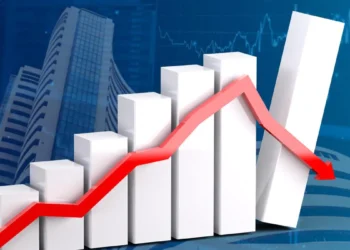Oil prices experienced a modest uptick on Tuesday, driven by supply cuts announced by major oil exporters Saudi Arabia and Russia for the month of August. However, the gains were tempered by concerns over the uncertain global economic outlook. Brent crude futures rose by 0.42% to $75.73 a barrel, while U.S. West Texas Intermediate crude climbed by 0.45% to $70.96 a barrel. Despite the positive news on supply cuts, oil benchmarks settled down around 1% in the previous session due to a gloomy macroeconomic environment. This article delves into the factors influencing oil prices and discusses the potential implications for the market.
Supply Cuts by Top Exporters
Saudi Arabia confirmed that it would extend its voluntary output cut of 1 million barrels per day (bpd) into August. Russia and Algeria also pledged to reduce their output and export levels by 500,000 bpd and 20,000 bpd, respectively. When fully implemented, these measures would result in a combined reduction of 5.36 million bpd compared to August 2022 levels. However, some member countries may struggle to meet their quotas, potentially leading to even greater supply cuts, according to PVM analyst Tamas Varga.
Uncertain Global Economic Outlook
Despite the efforts to tighten supply, oil prices were affected by concerns surrounding the global economic outlook. Business surveys have revealed a decline in global factory activity due to sluggish demand in China and Europe, while U.S. manufacturing also experienced a decline in June, reaching levels last seen during the initial wave of the COVID-19 pandemic. This broader economic uncertainty is expected to overshadow the impact of the supply cuts by OPEC+ and may weigh on market sentiment.
Market Impact and Analyst Perspectives
The combination of expectations for higher U.S. interest rates, fears of a potential recession in the U.S. following the European Union, and the prevailing economic uncertainty are likely to exert continued pressure on markets, according to analysts at Eurasia Group. Naeem Aslam, the chief investment officer at Zaye Capital Markets, believes that despite the efforts of Saudi Arabia and Russia, oil prices may not regain the levels above $90 per barrel. He suggests that prices are more likely to consolidate within the range of $65 to $70.
Bottom line
While oil prices experienced a slight increase due to supply cuts by major exporters, the uncertain global economic outlook remains a significant concern for the market. Sluggish demand in key economies and the potential for higher interest rates and recessions in major economies may continue to impact oil prices. Analysts suggest that oil prices may consolidate within a lower range, reflecting the challenging market conditions. Market participants will closely monitor economic developments and the implementation of supply cuts to gauge the future trajectory of oil prices.










